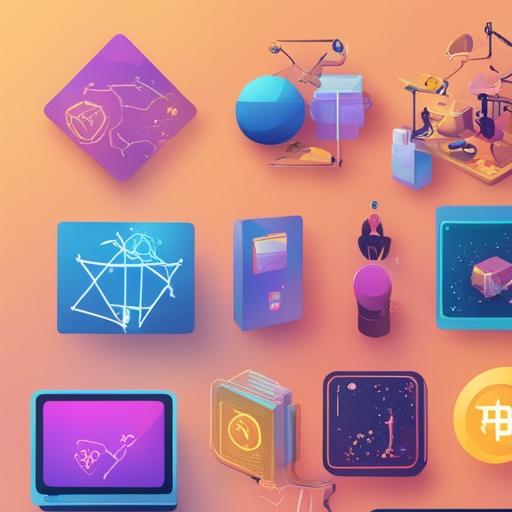In the ever-evolving landscape of digital innovation, NFTs, or Non-Fungible Tokens, have emerged as a groundbreaking concept, redefining ownership and value in the digital world. While the term has become ubiquitous in discussions around digital art, collectibles, and virtual assets, many still find the underlying concept elusive. In this blog post, we delve into what NFTs are, how they work, and why they have garnered so much attention.
At its core, an NFT is a type of digital asset that represents ownership or proof of authenticity of a unique item or piece of content. Unlike cryptocurrencies such as Bitcoin or Ethereum, which are fungible and can be exchanged on a one-to-one basis, NFTs are unique and cannot be replaced with something else. This uniqueness is what gives NFTs their value.

NFTs are built on blockchain technology, which is a decentralized digital ledger that records transactions across multiple computers in such a way that the registered transactions cannot be altered retroactively. The blockchain ensures that each NFT is one-of-a-kind, traceable, and verifiable, providing a way to establish and transfer ownership of digital assets securely.
One of the most fascinating applications of NFTs is in the art world. Digital artists can create and sell their work as NFTs, effectively monetizing digital art in ways that were previously impossible. When someone purchases an NFT artwork, they are buying a token that verifies their ownership of the digital piece. This has led to an explosion of interest in digital art and a corresponding surge in the prices of NFT artworks. Notable platforms like OpenSea, Rarible, and Foundation have become marketplaces where artists and collectors converge.
However, NFTs are not limited to just digital art. They have applications in various other domains, such as virtual real estate, gaming, music, and even tweets. For example, in the virtual gaming world, NFTs can represent ownership of in-game assets like characters, skins, or virtual land. This has added a new dimension to gaming, allowing players to truly own and trade their in-game assets.
The music industry is also exploring NFTs as a way for artists to sell exclusive rights or experiences directly to their fans. Musicians can release limited-edition albums, concert tickets, or behind-the-scenes content as NFTs, creating new revenue streams and fostering deeper connections with their audience.
Despite the excitement, NFTs are not without their controversies. One significant concern is the environmental impact of blockchain technology, particularly the energy consumption associated with minting NFTs. Another issue is the speculative nature of the market, where prices can be immensely volatile. Additionally, the legal and regulatory landscape around NFTs is still evolving, raising questions about intellectual property rights and consumer protection.
Nevertheless, the potential of NFTs to revolutionize digital ownership and create new economic opportunities is undeniable. As technology advances and the ecosystem matures, we can expect to see more innovative uses for NFTs across various sectors.
In conclusion, NFTs represent a novel way to think about ownership, value, and creativity in the digital age. By leveraging blockchain technology, they provide a secure and verifiable means to claim ownership of unique digital assets, opening up new possibilities for artists, gamers, musicians, and creators of all kinds. While challenges remain, the transformative potential of NFTs makes them a fascinating development in the world of digital innovation.
